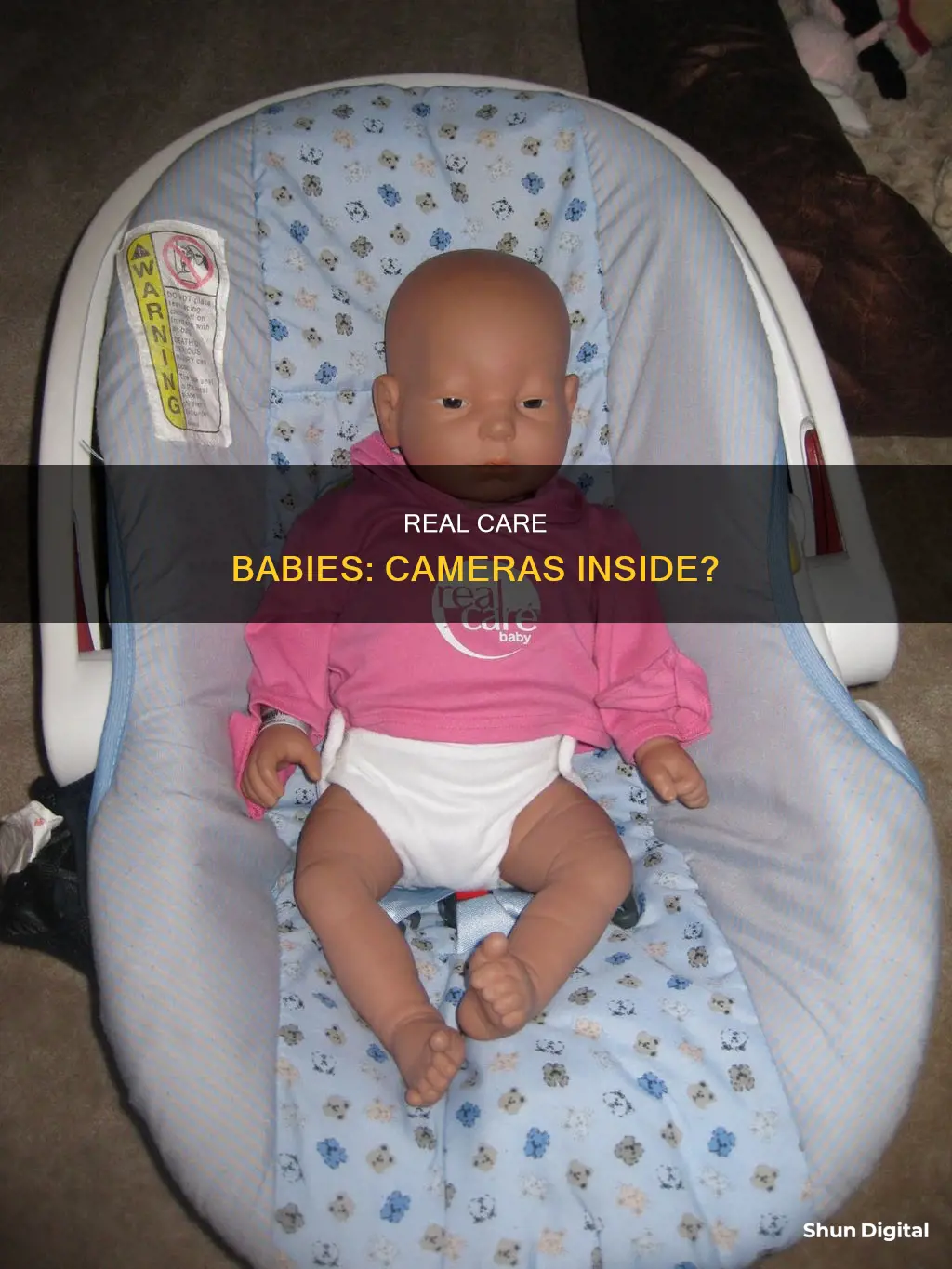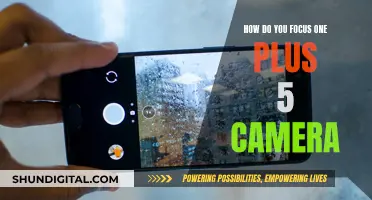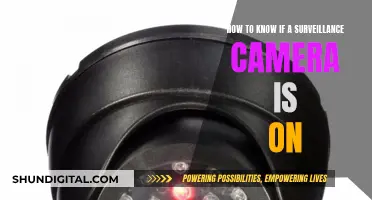
RealCare Babies are computerized infant simulators designed to replicate the experience of parenting a newborn. They are the world's only such simulator that requires realistic care and reports on how it was cared for. The babies cry like real infants and must be fed, burped, rocked, and have their diapers changed. However, there is no indication that RealCare Babies have cameras in them.
| Characteristics | Values |
|---|---|
| Do RealCare Babies have cameras? | There is no indication that RealCare Babies have cameras in them. |
| What are RealCare Babies? | RealCare Babies are computerized infant simulators that require realistic care and report on how they were cared for. |
| How much do RealCare Babies cost? | The RealCare Baby has a starting price of $649. |
| Where are RealCare Babies used? | RealCare Babies are used in nearly 30,000 schools and organizations in more than 90 countries. |
| What is the purpose of RealCare Babies? | They are used for teaching child-care workers, in child-abuse prevention, for parenting education, and in teen pregnancy prevention programs. |
| How do RealCare Babies work? | When the baby cries, students must respond within two minutes by touching a special wristband to a sensor on the baby. The student's responses are stored in the baby's electronics, and teachers can connect the baby to a computer to get a report on how the student performed. |
| Are there different types of RealCare Babies? | Yes, there are additional models that represent high-needs babies, including babies whose mothers used drugs, a fetal-alcohol-syndrome baby, and a baby suffering from shaken-baby syndrome. |
| How realistic are RealCare Babies? | They are designed to replicate the experience of parenting a newborn. They cry like real babies, and some models have added features like shaking or a see-through head that lights up to show brain damage. They also smell like babies, with a baby powder scent infused into the plastic. |
What You'll Learn
- RealCare Babies are computerized infant simulators that require realistic care
- They do not have cameras but report on how they were cared for
- The babies are designed to replicate the experience of parenting a newborn
- They are used in schools to teach students about parenting and child development
- The infant simulators are also used in child-abuse prevention and teen pregnancy prevention programs

RealCare Babies are computerized infant simulators that require realistic care
RealCare Babies are infant simulators that require realistic care. They are computerized dolls designed to replicate the experience of parenting a newborn. The dolls are programmed to cry like real babies and require students to feed, burp, change nappies, and keep them warm and rocked. The baby's electronics store student responses, which are then reported to the teacher when the baby is returned.
The RealCare Baby is used in schools and organisations in over 90 countries. It is often used in health and child development classes, where students take the baby home for a weekend to test their parenting skills. The doll must be cared for and attended to within a timeframe, with the baby's cry being a recording of a real infant. The students must then determine what the baby needs and respond accordingly.
The lessons learned from these computerized infant simulators are important, especially in areas with high teen pregnancy rates. The dolls can be set to different levels of difficulty, but even the easy setting can prove challenging for students. The experience is designed to be realistic and often leaves an impression on the students, who gain a better understanding of the responsibilities and demands of parenting.
While there is no indication that RealCare Babies have cameras in them, they do have sensors and electronics that record student responses and interactions. This data is then used to generate a report for the teacher to evaluate the student's performance in caring for the simulated infant.
Reducing Noise in Underexposed Camera Raw Files
You may want to see also

They do not have cameras but report on how they were cared for
RealCare Babies are computerized infant simulators that require realistic care and report on how they were cared for. They do not have cameras. The infant simulators are designed to replicate the experience of parenting a newborn and are used as educational tools in schools and organizations worldwide.
The RealCare Baby system includes a baby doll and a control center. The doll is equipped with sensors and electronics that track and record the student's caregiving actions. It can cry like a real baby, and students must respond to its needs within two minutes by touching a special wristband to a sensor on the baby. The baby may need to be fed, burped, rocked, or have its diaper changed. The student's responses are stored in the baby's electronics for later review.
Teachers can connect the baby doll to a computer and generate a report on how the student performed in caring for the baby. This report includes details on the student's actions and the baby's needs, providing valuable insights into the student's parenting skills and understanding of child care.
The RealCare Baby system is designed to provide realistic simulations of infant care, helping students understand the responsibilities and challenges of parenting. It offers a hands-on learning experience that goes beyond traditional classroom instruction. By interacting with the baby doll and responding to its needs, students gain a deeper understanding of the time and effort required to care for a newborn.
In addition to the standard RealCare Baby, there are also models that represent high-needs babies, such as those exposed to drugs or alcohol in utero or those suffering from shaken baby syndrome. These specialized models provide an even more comprehensive learning experience, allowing students to recognize and respond to specific infant care challenges.
The RealCare Baby system has been widely adopted, with nearly 30,000 schools and organizations in over 90 countries using it for child-care worker training, child-abuse prevention programs, parenting education, and teen pregnancy prevention programs. Its realistic simulations and detailed reporting capabilities make it a valuable tool for teaching and reinforcing essential parenting skills.
Focusing Aids: Camera's Superpowers Unveiled
You may want to see also

The babies are designed to replicate the experience of parenting a newborn
RealCare Baby® 3 is an advanced infant simulator designed to replicate the experience of parenting a newborn. It is a unique learning aid used by educators worldwide to teach early childhood, parenting, and infant health lessons. The simulator uses wireless programming to track and report on various caregiver behaviours, such as care events, mishandling actions, time in a car seat, and clothing changes.
The RealCare Baby comes with four sets of curriculum and activities to help instructors create relevant and engaging learning experiences for their students. The curriculum covers topics such as basic infant care, life skills and healthy choices, parenting skills, and healthy relationships. The simulator can be customised to suit individual student needs, providing a sensitive and meaningful learning experience.
The impact of the RealCare Baby on students is tremendous, with many realising the significant responsibilities and sacrifices that come with parenting. The simulator provides a reality check, helping students understand the challenges of becoming a parent and the extensive care required for a newborn.
Overall, the RealCare Baby is an innovative tool that enhances students' understanding of infant care and the complexities of parenting. By offering a hands-on and realistic simulation, educators can effectively prepare students for the demands of newborn care and early childhood development.
The Megapixel Mystery: Uncovering 90s Bank Surveillance Camera Secrets
You may want to see also

They are used in schools to teach students about parenting and child development
RealCare Babies are computerized infant simulators that are used in schools to teach students about parenting and child development. They are designed to require realistic care and provide reports on how they were cared for, including care events, mishandling actions, time in a car seat, and clothing changes. The simulators have a patented neck with sensors that can detect if the baby's head is not supported properly, and they also register other forms of abuse such as shaking and physical abuse.
The RealCare Baby is often used in parenting and prenatal education classes, where students are given the opportunity to care for the simulator over a weekend. During this time, they must learn to interpret the baby's cries and respond to its needs, such as feeding, burping, and changing diapers. The experience is designed to give students a realistic glimpse into the challenges and responsibilities of parenting.
The use of RealCare Babies in schools has been met with positive responses from both students and teachers. Students gain a better understanding of the time and effort required to care for an infant, and many express a newfound appreciation for their parents or caregivers. Teachers appreciate the realism of the simulators and the impact they have on their students' understanding of parenting and child development.
In addition to parenting education, the RealCare Baby can also be used to teach students about infant health, sex education, and child development. The simulators come with different curricula, including basic infant care, life skills, and healthy choices, allowing instructors to create relevant and engaging learning experiences for their students.
Moultrie W-35i Trail Camera: 16MP Photography Since..
You may want to see also

The infant simulators are also used in child-abuse prevention and teen pregnancy prevention programs
Infant simulators are lifelike baby dolls that are used in schools and communities in 89 countries, including 67% of US school districts, as part of programs aimed at preventing teen pregnancy and child abuse. These dolls are designed to mimic the behaviour of a real baby, crying when they need to be fed, burped, rocked, or changed. They also electronically measure and report on mishandling, crying time, the number of changes, and general care.
One such program is the Virtual Infant Parenting (VIP) program, which was evaluated in a randomised controlled trial in Western Australia. Between 2003 and 2006, 1,267 girls aged 13-15 participated in the six-day VIP program, while another 1,567 girls received the standard health education curriculum without an infant simulator. The researchers followed the girls until they reached the age of 20, linking school data to hospital records and abortion clinics.
The results of the study showed that the VIP program did not achieve its aim of reducing teenage pregnancy. In fact, the intervention group was 36% more likely to become pregnant than the control group. A similar study published in 2011 found that the programs had no effect on students' knowledge levels and mixed effects on their attitudes about teen pregnancy.
Despite these findings, infant simulators continue to be used in child-abuse prevention and teen pregnancy prevention programs. GTSimulators, for example, offers realistic infant simulators for advanced airway, intubation, nursing care, and emergency life support training. Realityworks, the maker and seller of the RealCare Baby infant simulator, provides a range of support materials and resources for instructors and participants, including videos, FAQs, and certificates.
Charging Camera Batteries: Empire Adapter Instructions
You may want to see also
Frequently asked questions
There is no indication that RealCare Babies have cameras in them. They are, however, computerized infant simulators that require realistic care and report on how they were cared for.
RealCare Babies are used to teach child-care workers, in child-abuse prevention programs, for parenting education, and in teen pregnancy prevention programs.
When the babies cry, the students must respond within two minutes by touching a special wristband to a sensor on the baby. The students then need to determine what the baby needs, such as feeding, burping, rocking, or a diaper change. The student's responses are stored in the baby's electronics, and the teacher can later connect the baby to a computer to get a report on the student's performance.







